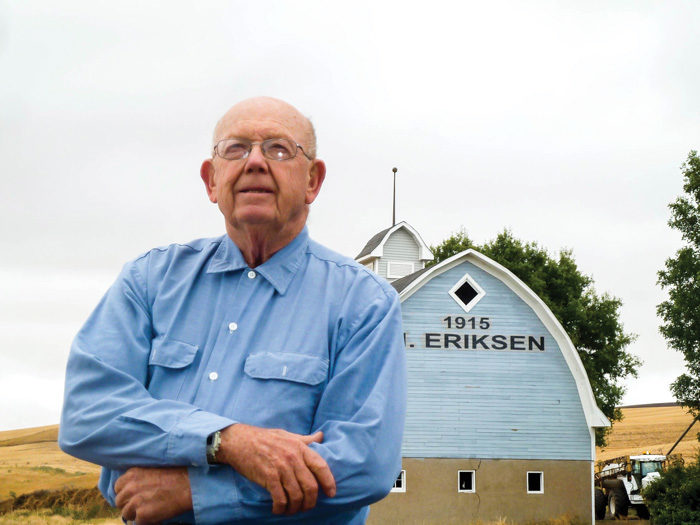No-Till Farmer
Get full access NOW to the most comprehensive, powerful and easy-to-use online resource for no-tillage practices. Just one good idea will pay for your subscription hundreds of times over.

By Tracy Eriksen
As interviewed by Martha Mintz
NAME: Tracy Eriksen
LOCATION: St. John, Wash.
YEARS NO-TILLING: 35
ACRES: 2,700
CROPS: Winter wheat, spring wheat, winter canola, spring barley, yellow and green peas, garbanzo beans and sorghum
Compared to when I was growing up in the 1940s, our eastern Washington farm, situated on the western side of the Palouse Hills, couldn’t be more different today.
From the weather, to the crops, to the machinery and tillage practices, almost everything has changed in a fairly dramatic fashion. This is in sharp contrast to many farmers in our area who cling to tradition and still farm the way their grandfathers and great grandfathers did — pulverizing the soil and watching it drift away with wind and water.
Tradition is a powerful aspect of farming; one I’ve found still has the power to hold me back from time to time. I figured out early on in my farming career, however, that tradition might just be the end of us as farmers in the Palouse Hills. It was the early 1970s when I realized if we didn’t stop erosion, I could be the last generation farming this land. This revelation led me down a long path of conservation tillage, and ultimately to 100% no-till.
The Palouse Hills were sculpted into wind-deposited loess soils by floodwaters during the ice age from ancient Lake Missoula. Our soil depths vary from a few inches to over 100 feet deep, and fields slope up to…